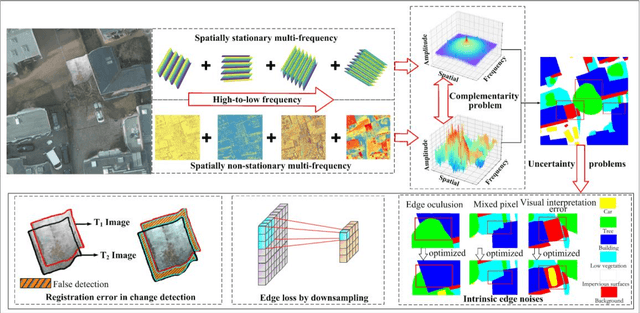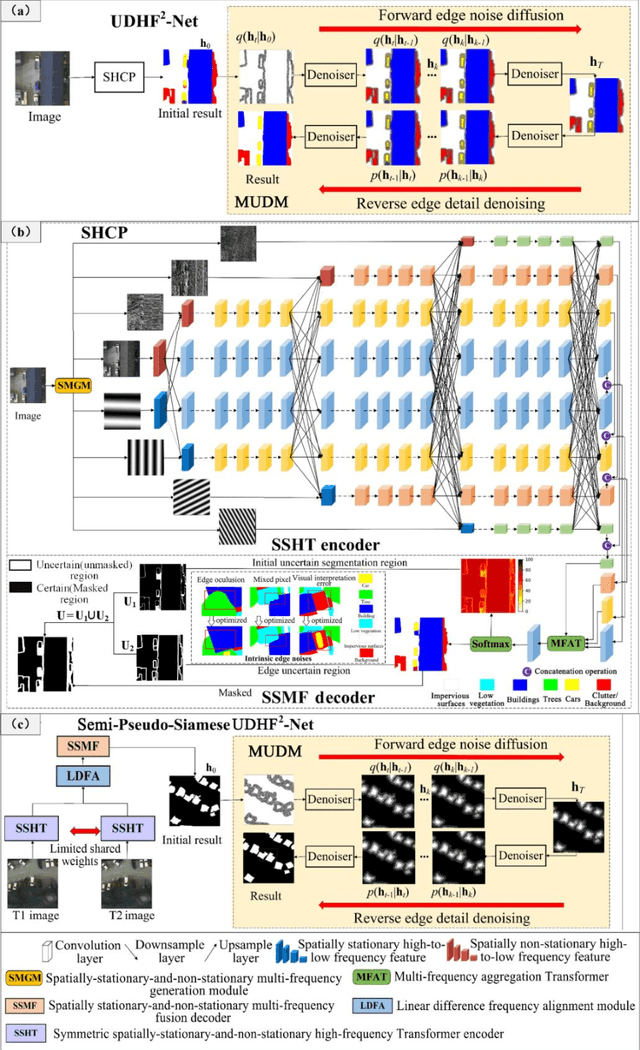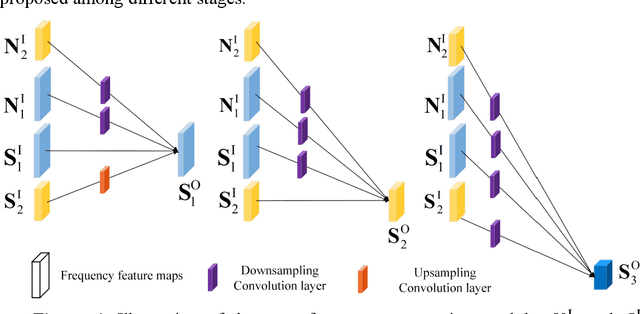Chang Li
Learning Temporal Abstractions via Variational Homomorphisms in Option-Induced Abstract MDPs
Jul 24, 2025Abstract:Large Language Models (LLMs) have shown remarkable reasoning ability through explicit Chain-of-Thought (CoT) prompting, but generating these step-by-step textual explanations is computationally expensive and slow. To overcome this, we aim to develop a framework for efficient, implicit reasoning, where the model "thinks" in a latent space without generating explicit text for every step. We propose that these latent thoughts can be modeled as temporally-extended abstract actions, or options, within a hierarchical reinforcement learning framework. To effectively learn a diverse library of options as latent embeddings, we first introduce the Variational Markovian Option Critic (VMOC), an off-policy algorithm that uses variational inference within the HiT-MDP framework. To provide a rigorous foundation for using these options as an abstract reasoning space, we extend the theory of continuous MDP homomorphisms. This proves that learning a policy in the simplified, abstract latent space, for which VMOC is suited, preserves the optimality of the solution to the original, complex problem. Finally, we propose a cold-start procedure that leverages supervised fine-tuning (SFT) data to distill human reasoning demonstrations into this latent option space, providing a rich initialization for the model's reasoning capabilities. Extensive experiments demonstrate that our approach achieves strong performance on complex logical reasoning benchmarks and challenging locomotion tasks, validating our framework as a principled method for learning abstract skills for both language and control.
Latent Swap Joint Diffusion for Long-Form Audio Generation
Feb 07, 2025



Abstract:Previous work on long-form audio generation using global-view diffusion or iterative generation demands significant training or inference costs. While recent advancements in multi-view joint diffusion for panoramic generation provide an efficient option, they struggle with spectrum generation with severe overlap distortions and high cross-view consistency costs. We initially explore this phenomenon through the connectivity inheritance of latent maps and uncover that averaging operations excessively smooth the high-frequency components of the latent map. To address these issues, we propose Swap Forward (SaFa), a frame-level latent swap framework that synchronizes multiple diffusions to produce a globally coherent long audio with more spectrum details in a forward-only manner. At its core, the bidirectional Self-Loop Latent Swap is applied between adjacent views, leveraging stepwise diffusion trajectory to adaptively enhance high-frequency components without disrupting low-frequency components. Furthermore, to ensure cross-view consistency, the unidirectional Reference-Guided Latent Swap is applied between the reference and the non-overlap regions of each subview during the early stages, providing centralized trajectory guidance. Quantitative and qualitative experiments demonstrate that SaFa significantly outperforms existing joint diffusion methods and even training-based long audio generation models. Moreover, we find that it also adapts well to panoramic generation, achieving comparable state-of-the-art performance with greater efficiency and model generalizability. Project page is available at https://swapforward.github.io/.
An Atomic Skill Library Construction Method for Data-Efficient Embodied Manipulation
Jan 25, 2025



Abstract:Embodied manipulation is a fundamental ability in the realm of embodied artificial intelligence. Although current embodied manipulation models show certain generalizations in specific settings, they struggle in new environments and tasks due to the complexity and diversity of real-world scenarios. The traditional end-to-end data collection and training manner leads to significant data demands, which we call ``data explosion''. To address the issue, we introduce a three-wheeled data-driven method to build an atomic skill library. We divide tasks into subtasks using the Vision-Language Planning (VLP). Then, atomic skill definitions are formed by abstracting the subtasks. Finally, an atomic skill library is constructed via data collection and Vision-Language-Action (VLA) fine-tuning. As the atomic skill library expands dynamically with the three-wheel update strategy, the range of tasks it can cover grows naturally. In this way, our method shifts focus from end-to-end tasks to atomic skills, significantly reducing data costs while maintaining high performance and enabling efficient adaptation to new tasks. Extensive experiments in real-world settings demonstrate the effectiveness and efficiency of our approach.
Bridge-SR: Schrödinger Bridge for Efficient SR
Jan 14, 2025



Abstract:Speech super-resolution (SR), which generates a waveform at a higher sampling rate from its low-resolution version, is a long-standing critical task in speech restoration. Previous works have explored speech SR in different data spaces, but these methods either require additional compression networks or exhibit limited synthesis quality and inference speed. Motivated by recent advances in probabilistic generative models, we present Bridge-SR, a novel and efficient any-to-48kHz SR system in the speech waveform domain. Using tractable Schr\"odinger Bridge models, we leverage the observed low-resolution waveform as a prior, which is intrinsically informative for the high-resolution target. By optimizing a lightweight network to learn the score functions from the prior to the target, we achieve efficient waveform SR through a data-to-data generation process that fully exploits the instructive content contained in the low-resolution observation. Furthermore, we identify the importance of the noise schedule, data scaling, and auxiliary loss functions, which further improve the SR quality of bridge-based systems. The experiments conducted on the benchmark dataset VCTK demonstrate the efficiency of our system: (1) in terms of sample quality, Bridge-SR outperforms several strong baseline methods under different SR settings, using a lightweight network backbone (1.7M); (2) in terms of inference speed, our 4-step synthesis achieves better performance than the 8-step conditional diffusion counterpart (LSD: 0.911 vs 0.927). Demo at https://bridge-sr.github.io.
ΩSFormer: Dual-Modal Ω-like Super-Resolution Transformer Network for Cross-scale and High-accuracy Terraced Field Vectorization Extraction
Nov 26, 2024



Abstract:Terraced field is a significant engineering practice for soil and water conservation (SWC). Terraced field extraction from remotely sensed imagery is the foundation for monitoring and evaluating SWC. This study is the first to propose a novel dual-modal {\Omega}-like super-resolution Transformer network for intelligent TFVE, offering the following advantages: (1) reducing edge segmentation error from conventional multi-scale downsampling encoder, through fusing original high-resolution features with downsampling features at each step of encoder and leveraging a multi-head attention mechanism; (2) improving the accuracy of TFVE by proposing a {\Omega}-like network structure, which fully integrates rich high-level features from both spectral and terrain data to form cross-scale super-resolution features; (3) validating an optimal fusion scheme for cross-modal and cross-scale (i.e., inconsistent spatial resolution between remotely sensed imagery and DEM) super-resolution feature extraction; (4) mitigating uncertainty between segmentation edge pixels by a coarse-to-fine and spatial topological semantic relationship optimization (STSRO) segmentation strategy; (5) leveraging contour vibration neural network to continuously optimize parameters and iteratively vectorize terraced fields from semantic segmentation results. Moreover, a DMRVD for deep-learning-based TFVE was created for the first time, which covers nine study areas in four provinces of China, with a total coverage area of 22441 square kilometers. To assess the performance of {\Omega}SFormer, classic and SOTA networks were compared. The mIOU of {\Omega}SFormer has improved by 0.165, 0.297 and 0.128 respectively, when compared with best accuracy single-modal remotely sensed imagery, single-modal DEM and dual-modal result.
DBF-Net: A Dual-Branch Network with Feature Fusion for Ultrasound Image Segmentation
Nov 17, 2024Abstract:Accurately segmenting lesions in ultrasound images is challenging due to the difficulty in distinguishing boundaries between lesions and surrounding tissues. While deep learning has improved segmentation accuracy, there is limited focus on boundary quality and its relationship with body structures. To address this, we introduce UBBS-Net, a dual-branch deep neural network that learns the relationship between body and boundary for improved segmentation. We also propose a feature fusion module to integrate body and boundary information. Evaluated on three public datasets, UBBS-Net outperforms existing methods, achieving Dice Similarity Coefficients of 81.05% for breast cancer, 76.41% for brachial plexus nerves, and 87.75% for infantile hemangioma segmentation. Our results demonstrate the effectiveness of UBBS-Net for ultrasound image segmentation. The code is available at https://github.com/apple1986/DBF-Net.
RespDiff: An End-to-End Multi-scale RNN Diffusion Model for Respiratory Waveform Estimation from PPG Signals
Oct 06, 2024



Abstract:Respiratory rate (RR) is a critical health indicator often monitored under inconvenient scenarios, limiting its practicality for continuous monitoring. Photoplethysmography (PPG) sensors, increasingly integrated into wearable devices, offer a chance to continuously estimate RR in a portable manner. In this paper, we propose RespDiff, an end-to-end multi-scale RNN diffusion model for respiratory waveform estimation from PPG signals. RespDiff does not require hand-crafted features or the exclusion of low-quality signal segments, making it suitable for real-world scenarios. The model employs multi-scale encoders, to extract features at different resolutions, and a bidirectional RNN to process PPG signals and extract respiratory waveform. Additionally, a spectral loss term is introduced to optimize the model further. Experiments conducted on the BIDMC dataset demonstrate that RespDiff outperforms notable previous works, achieving a mean absolute error (MAE) of 1.18 bpm for RR estimation while others range from 1.66 to 2.15 bpm, showing its potential for robust and accurate respiratory monitoring in real-world applications.
MRIo3DS-Net: A Mutually Reinforcing Images to 3D Surface RNN-like framework for model-adaptation indoor 3D reconstruction
Jul 16, 2024Abstract:This paper is the first to propose an end-to-end framework of mutually reinforcing images to 3D surface recurrent neural network-like for model-adaptation indoor 3D reconstruction,where multi-view dense matching and point cloud surface optimization are mutually reinforced by a RNN-like structure rather than being treated as a separate issue.The characteristics are as follows:In the multi-view dense matching module, the model-adaptation strategy is used to fine-tune and optimize a Transformer-based multi-view dense matching DNN,so that it has the higher image feature for matching and detail expression capabilities;In the point cloud surface optimization module,the 3D surface reconstruction network based on 3D implicit field is optimized by using model-adaptation strategy,which solves the problem of point cloud surface optimization without knowing normal vector of 3D surface.To improve and finely reconstruct 3D surfaces from point cloud,smooth loss is proposed and added to this module;The MRIo3DS-Net is a RNN-like framework,which utilizes the finely optimized 3D surface obtained by PCSOM to recursively reinforce the differentiable warping for optimizing MVDMM.This refinement leads to achieving better dense matching results, and better dense matching results leads to achieving better 3D surface results recursively and mutually.Hence, model-adaptation strategy can better collaborate the differences between the two network modules,so that they complement each other to achieve the better effect;To accelerate the transfer learning and training convergence from source domain to target domain,a multi-task loss function based on Bayesian uncertainty is used to adaptively adjust the weights between the two networks loss functions of MVDMM and PCSOM;In this multi-task cascade network framework,any modules can be replaced by any state-of-the-art networks to achieve better 3D reconstruction results.
ISWSST: Index-space-wave State Superposition Transformers for Multispectral Remotely Sensed Imagery Semantic Segmentation
Jul 03, 2024Abstract:Currently the semantic segmentation task of multispectral remotely sensed imagery (MSRSI) faces the following problems: 1) Usually, only single domain feature (i.e., space domain or frequency domain) is considered; 2) downsampling operation in encoder generally leads to the accuracy loss of edge extraction; 3) multichannel features of MSRSI are not fully considered; and 4) prior knowledge of remote sensing is not fully utilized. To solve the aforementioned issues, an index-space-wave state superposition Transformer (ISWSST) is the first to be proposed for MSRSI semantic segmentation by the inspiration from quantum mechanics, whose superiority is as follows: 1) index, space and wave states are superposed or fused to simulate quantum superposition by adaptively voting decision (i.e., ensemble learning idea) for being a stronger classifier and improving the segmentation accuracy; 2) a lossless wavelet pyramid encoder-decoder module is designed to losslessly reconstruct image and simulate quantum entanglement based on wavelet transform and inverse wavelet transform for avoiding the edge extraction loss; 3) combining multispectral features (i.e. remote sensing index and channel attention mechanism) is proposed to accurately extract ground objects from original resolution images; and 4) quantum mechanics are introduced to interpret the underlying superiority of ISWSST. Experiments show that ISWSST is validated and superior to the state-of-the-art architectures for the MSRSI segmentation task, which improves the segmentation and edge extraction accuracy effectively. Codes will be available publicly after our paper is accepted.
UDHF2-Net: An Uncertainty-diffusion-model-based High-Frequency TransFormer Network for High-accuracy Interpretation of Remotely Sensed Imagery
Jun 23, 2024



Abstract:Remotely sensed image high-accuracy interpretation (RSIHI), including tasks such as semantic segmentation and change detection, faces the three major problems: (1) complementarity problem of spatially stationary-and-non-stationary frequency; (2) edge uncertainty problem caused by down-sampling in the encoder step and intrinsic edge noises; and (3) false detection problem caused by imagery registration error in change detection. To solve the aforementioned problems, an uncertainty-diffusion-model-based high-Frequency TransFormer network (UDHF2-Net) is the proposed for RSIHI, the superiority of which is as following: (1) a spatially-stationary-and-non-stationary high-frequency connection paradigm (SHCP) is proposed to enhance the interaction of spatially stationary and non-stationary frequency features to yield high-fidelity edge extraction result. Inspired by HRFormer, SHCP remains the high-frequency stream through the whole encoder-decoder process with parallel high-to-low frequency streams and reduces the edge loss by a downsampling operation; (2) a mask-and-geo-knowledge-based uncertainty diffusion module (MUDM) is proposed to improve the robustness and edge noise resistance. MUDM could further optimize the uncertain region to improve edge extraction result by gradually removing the multiple geo-knowledge-based noises; (3) a semi-pseudo-Siamese UDHF2-Net for change detection task is proposed to reduce the pseudo change by registration error. It adopts semi-pseudo-Siamese architecture to extract above complemental frequency features for adaptively reducing registration differencing, and MUDM to recover the uncertain region by gradually reducing the registration error besides above edge noises. Comprehensive experiments were performed to demonstrate the superiority of UDHF2-Net. Especially ablation experiments indicate the effectiveness of UDHF2-Net.
 Add to Chrome
Add to Chrome Add to Firefox
Add to Firefox Add to Edge
Add to Edge